When to Aerate Lawn I Complete Lawn Aeration Guide
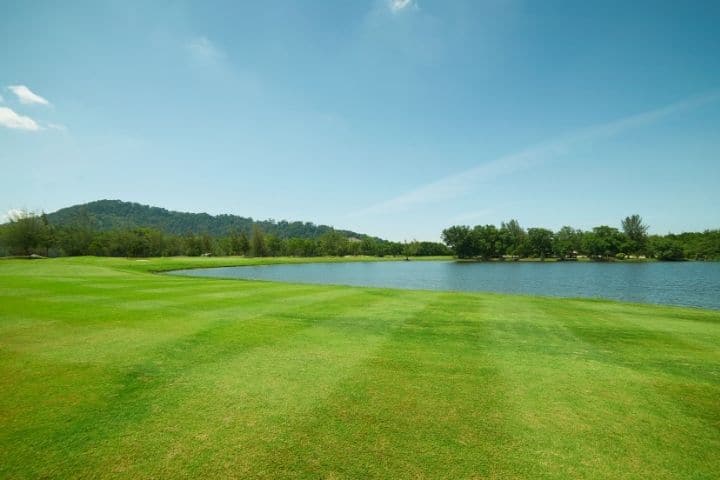
Lawn aeration is vital for the reduction of turf’s thatch layer and for combating soil compaction. For the aeration to be adequate, you must carry it out at a specific time depending on a set of conditions, including the cultivar or type of lawn, weather conditions, and moisture content held by turf’s soil.
So in this post, I will take you through the best time to employ a particular aeration method, depending on the soil’s state. I will also be brought to light how wrong timing of aeration will have negative results concerning the turf’s appearance, establishment, and how it may end up killing the grass. You’ll learn about the right time to carry out aeration in conjunction with lawn upkeep operations such as topdressing and overseeding.
1.Aerating Lawn According to your grass type
When to aerate winter lawns
The general rule is to do core aeration when there is the most root growth. For Kentucky bluegrass, the root growth occurs during cold seasons. Though it is termed a winter grass, aeration is best done in the autumn/fall season. This time will enable its roots to thrive and develop fast. In summer, its turf will be dormant.
Watering impact when aerated winter grass
For winter grass, aeration done before winter or during the fall will assist later during freezing and thawing of water held in the pores of the soil. However, there is a drawback here, lies in the holes or slits from the aeration promote soil heave due to the freezing and thawing
When to aerate summer lawns
Varieties like bermudagrass are the types of summer lawns. They develop significant root growth in late summer. For this reason, it is the best time for carrying out the aeration in summer. And on the other hand, bermudagrass will be in a dormant state during the winter season.
Aerating both summer and winter lawns
Though early summer aeration is sometimes encouraged with some summer lawn varieties, weeds can be a big challenge. Some weeds tend to thrive more compared to the lawn during this active growth season. Thus late summer aeration is more preferable as most plants would have already established. But with some particular invasive weed species like annual bluegrass, late and early summer are the best times for aeration to be done. On the other hand, crabgrass calls for fall aeration.
Additionally, the weeds should not have flowered to prevent weed seeds from filling up core holes. However, it is more economical to employ selective pre-emergence herbicides to counter the weeds before their seeds can germinate. If you want to apply herbicide, you can do it before aeration to prevent the reduction of the active chemical barrier.
When to avoid aeration?
With both winter and summer lawns, core aeration should not be done during the season when the grass will be dormant. This is mainly because the turfs will not recover and cover up the disturbing surface, which will have sustained core holes. Core soil, which is left on the surface, accelerates the spaces’ filling up during the lawn’s growing season.
2. Aerating your lawn according to Weather Conditions:
Weather condition which is suitable for aeration
Favorable weather conditions will stimulate the lawn’s fast recovery and promote rapid growth. For instance, summer lawns need moderate temperatures to recover from core aeration and to establish to cover up empty spaces quickly. Winter lawns will develop and recover fast from aeration when it is done on a sunny winter’s day with cold air. Moderate wet weather also stimulates the grass to cover up open spaces from coring, especially when hollow cores are spaced close as per standards.
When to avoid aeration?
Concerning summer and winter grasses, aeration should be avoided when it is considered hot with dry air. Such weather would inhibit the lawn’s recovery after aeration. It also denatures the lawn’s cells, killing it fast. Most expert advice is against carrying out the operation when it is warm and humid. Such kind of weather allows typically thriving of fungal infections that attack the roots through the hollow holes created by aeration.
Things to consider when watering after aerating your lawn
Care should be taken when watering after core aeration under freezing conditions. Frost will cause the turf’s soil to heave up as the water in the hollow holes expands, exerting outward pressure. This negatively affects the lawn’s recovery from the aeration.
Methods of choice of aeration are affected by the weather. Those consisting of aerating sandals, rolling aerators, and powered or towed aerators can be made use of at any time so long as frost is absent. However, shallow spiking or pricking will be valid under dry weather when the spikes are unable to penetrate deep. If one is to employ slitting or chisel tining using flat spikes attached to a mower, warm or moderate hot weather will give good results for the lawn.
If it is done in late winter, freeze, and thawing due to alternate cold and warm weather cause the slits formed to open up badly, leading to the lawn dying out. On the other hand, core aerating using a hollow tine aerator needs to be done when lawn recovery is guaranteed. And this includes during the rainy season when the soil is moist.
3. Impact of Moisture content held by turf’s soil when aerating
Core aeration is a machine job, and for this machine to execute proper aeration, it is essential to consider the moisture content concerning turf’s soil. Soils should be just moist for the best outcome. This is because the aeration equipment will be able to go deeper with ease. Moist soils also promote fast recovery by stimulating root growth. When core aeration is a method of choice, the aerator will be able to pull out intact plugs that serve to encourage turf’s growth.
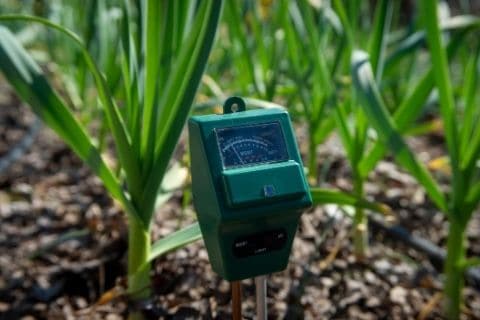
Moisture content on Soil
Avoid wet soil when aerating:
Very wet soils should be avoided because they cause aeration equipment to compact the soil further. It is also difficult to draw intact core plugs during this state due to puddling. Instead, it is advised that the lawn should have been watered days prior to aeration just to leave the soil moist. On the other hand, dry soil should get avoided because it causes the machine to bounce on the surface when it fails to penetrate down to extract the cores.
Dry soil aeration also subjects the machine to stress, which can damage it. With most varieties, midsummer aeration should be avoided because that’s when the soil will be too dry.
Use Spike aerating when soil is moist
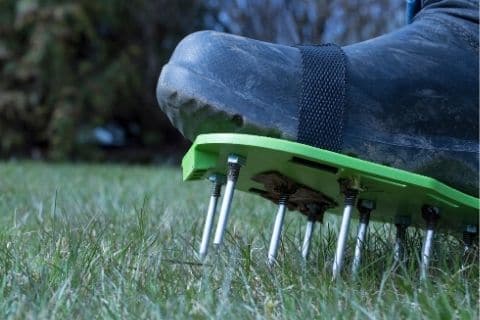
Spike Aerating
Spiking is often more accessible when soil is significantly moist. However, spiking often encourages compaction when done on wet ground. Concerning coring, very dry soils easily crack such that the hollow holes left after aeration become weakened. And this promotes the propagation of the cracks. The major problem with cracks lies within the allowance they give to diseases and infections to attack the lawn’s roots. Cracks also disturb the root system leading to stunted growth or worse.
Frequency of aeration
One must know when to perform frequent aeration, depending on the turf’s condition. Frequency of aeration is especially important when dealing with high imposed loads.
When to aerate frequently?
Consider aeration of a turf that experiences high traffic volume though it has a low traffic tolerance, for example, centipede centipedes turfgrass will require more frequent aeration.
When aeration is to be infrequent
On the other hand, bermudagrass, which has a good tolerance for high traffic volumes, would not require frequent aeration. In general, I recommend that a lawn be subjected to core aeration at least six times a year if it has low traffic tolerance while being frequently subjected to high traffic loads. And this will tackle the overgoing compaction at the same time allowing for the lawn to recover fast. Lawns not subjected to frequent loads, however, can have aeration at least once a year though this also has to be done when the grass is growing for fast recovery.
From the discussion, it is evident that timing can be a matter of making a compromise concerning the conditions outlined. However, most lawn caretakers base their aeration timing on the period the cultivar thrives while avoiding the dormant period. Other timings determining factors like upkeep operations have to do more with what one intends to achieve. While factors like weather are more inclined on the limiting side.
Conventional methods you can use when aerating.
One aeration method can be distinguished from other ways by the operation’s equipment, including how it carries out the aeration. The aeration can be manual or automated mechanically. Machine with hollow tines removes soil cores, creating holes in the process, whereas that with open tines divots the soil surface. The equipment used is crucial because it influences the effectiveness of the aeration at any time.
1.Core aeration
Most lawn experts prefer this method. A core aerator, sometimes referred to as a plug aerator, is used. The equipment consists of a mower like a machine with rows of hollow tines that remove soil plugs from compact sowing and deposit them on turf’s surface. Hole sizes created vary in width and depth. Turf responds best to this method when core holes are close and deep. This method promotes seed/soil contact to a significant extent and gives a significant compaction reduction.
2. Spike aeration
The equipment consists of poking spikes attached to a machine or spiked aerator sandals that can get worn. Its depth of penetration and width of holes are lesser in size compared to those made by core aerator. This method only offers reduced compaction to some extent. It also promotes seed/soil contact to a lesser extent.
3. Slicing aeration
The equipment consists of a rotating blade that cuts through to the soil without removing the soil as done in core aeration. This method offers the least reduction in compaction when compared to the ones above. The same can be said concerning seed/soil contact.
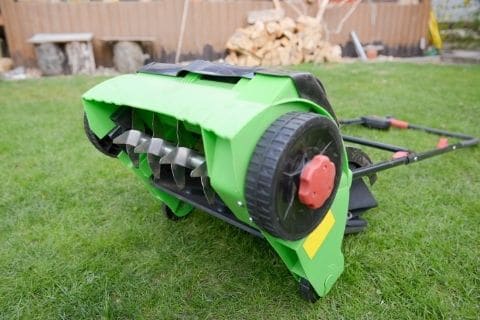
Slicing aerators
4. Grooving
Consist of highly mechanized equipment that creates grooves within the soil. It gives a significant reduction in soil compaction and also promotes seed/soil contact to a greater extent. In addition to this, it also loosens the thatch layer.
Why is it important to aerate your lawn
Aeration’s purpose is to deal with compaction, as mentioned before. Compaction of the top layer of lawn cover causes the following :
1.Reduction in infiltration
Due to the formation of a hard surface crust, water will not be able to effectively sink to the root zone where the roots need it. And this often causes wilting of the grass, a permanent form of withering in the worst scenario. Removal of soil plugs through aeration counters this problem by creating a large pore system in which water sinks effectively.
2. Reduced intake of nutrients
Reduced infiltration dissolves fewer nutrients for intake by the grass. In addition to this, the top dressing will not be readily available for uptake by the roots due to compaction. And this causes weak growth, coverage, and discoloration in cases where there is low nitrogen. When hollow cores are created, this facilitates organic and inorganic fertilizers to get applied with nutrients being absorbed deeper by the soil. Through chemotropism, the lawn’s roots will naturally grow down in response to these nutrients, thus enhancing the lawn’s root development and overall appearance.
3. Poor root development
Compaction restricts lawn roots to establish within a thatch layer. This layer is mainly composed of decomposing parts of the dead lawn. Poor root development is a recipe for inadequate lawn cover, often leads to identifiable spots with sparse grass. Aeration effectively reduces this thatch layer, promotes root development by giving them enough room to expand.
Also, this is achieved primarily through core aeration when soil plugs left on the thatch layer’s surface. The plugs contain microbes, which will end up breaking down organic matter in the layer under discussion, thus reducing its size, preferably under two inches.
4.Reduced soil air content
Air is restricted from being absorbed due to the compact surface layer. For roots to thrive, there should be a gaseous exchange balance between carbon dioxide and oxygen. The mechanism of compaction generally expels the air that was originally present in the soil—oxygen needed in root development, for instance. Air, which is composed of gases like nitrogen, is also crucial for the release of some nutrients. It includes nitrates from nitrogen broken by lightning. By promoting the creation of pores through aeration, this air will fill these pores, thus improving the lawn.
5. Increased ponding and runoff
With reduced infiltration, there will be ponding as the water gathers on top of the compact layer. Prolonged ponding ultimately leads to the destruction of the lawn due to a lack of adequate air. Anaerobic bacteria thrive under ponding, promoting the decomposition of the lawn.
When this water becomes mobile, it becomes runoff. Frequent runoff can end up eroding the soil leaving some of the roots exposed. Aeration effectively removes this problem by increasing infiltration, as mentioned earlier on.
6. Reduced resilience and cushioning
Due to the grass’s state of being poor attributed to deprival of adequate water and nutrients, for example, the lawn will easily give in to imposed loads. And this may eventually destroy it. By countering this problem through aeration, the lawn will effectively establish a larger surface area, which dissipates imposed loads evenly, providing the required cushioning.
7. Reduced soil life activity
Compaction prevents small life forms like earthworms from quickly burrowing through the root zone. The burrowing is essential because it creates channels where air and water would quickly move through towards where the lawn needs them. These life forms also help the soil by incorporating organic matter in the form of its waste. Core aeration, which is the most recommended method, will loosen the soil, create an entrance for smaller life forms.
To Sum Up
Besides the type of lawn, weather, and moisture conditions, some are influenced to do aeration while carrying out lawn’s upkeep operations. These include top dressing and overseeding. You must overseed during that particular cultivar’s period of high growth. Topdressing will also be effective during this time because of the allowance given to nutrients to penetrate deep beneath the soil.
Though it is best to apply top dressing during the period when the lawn will be experiencing the fastest growth, weeds have a high chance of competing for these resources with the lawn. And this is because they usually grow at a faster rate compared to that of the lawn. To make sure that weeds will not compete with the lawn, it is best to topdress late summer for summer lawns despite the growth rate that reduced with some cultivars. Here most weeds would have matured. Winter grasses are best given top dressing in autumn when most weeds are dormant. Generally, autumn core aeration is favorable when combined with autumn overseeding and topdressing.

Kazi Taslim
Editor
Poweredgrip ensures an expert team of writers, to provide you with excellent informational and unbiased content. We are dedicated to giving you much smoother and best up to date information. We share the incomparable tricks, tips that give you awareness and confidence for making your buying decision. We are a very enthusiastic, dedicated and hard worker. Kazi Taslim is the Author and Editor of our experienced writing team.
Related Post
Spring Lawn Preparation | Easy Step By Step Guide
"Speak of spring, the foison of the year," goes a famous quote. Spring follows winter, precedes summer, and is the first season of the year. Trees come into blossom, and plants spring forth from the ground and life sprouts from all around. It is the time when your...
What Height Should I Cut My Grass? | Fix Your Measurement
Did you know that cutting is a need to grass? It is like "pitching" your yard or garden grass for rugged growth. A lot of people have these questions in mind when it comes to cutting grass. What height should I cut my grass? Does every specific type of grass have a...
Lawn Mowing Etiquette | How to Be Social Neighbor
You have probably heard about etiquette in terms of having good table manners, greeting others, and so forth. But, are there do's and don'ts when it comes to start mowing lawn? Yes, there are some guidelines you ought to follow when you cut your grass to make sure you...
Fall Lawn Care | Essential Fall Lawn Care Tips
Fall has come with its cool weather, and you do not know how to maintain your lawn to be healthy and strong. You really want to improve your landscape's appearance, and having a lush lawn all year round is your goal. If that is the case, you do not have to worry. Fall...
Benefits of Mulching | Tips on Mulching Grass Clippings
When starting to cultivate your interest in gardening, you will constantly be looking for ways to improve your plants. You could be curious if getting dirty from handling the mulch is worth it. Well, you have searched in the right place at the right time as well. In...
Winter Lawn Care | Basic Tips of Winter Lawn Care
Winter is characterized by extreme weather conditions that can stress your lawn, making winter lawn care important. Cold and dry spells are likely to reduce the growth rate of your lawn. Most grasses enter dormancy during this cold season. Also, to make matters worse,...

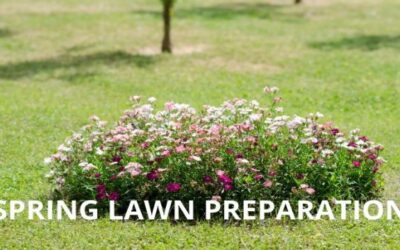
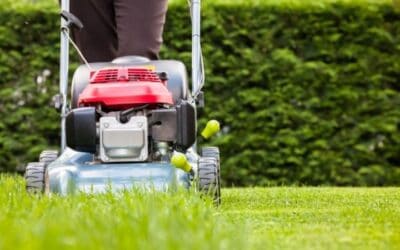

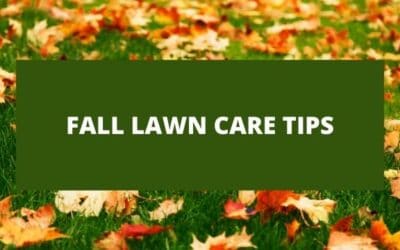
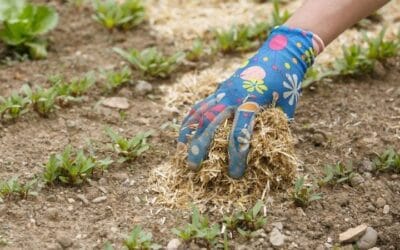

Trackbacks/Pingbacks